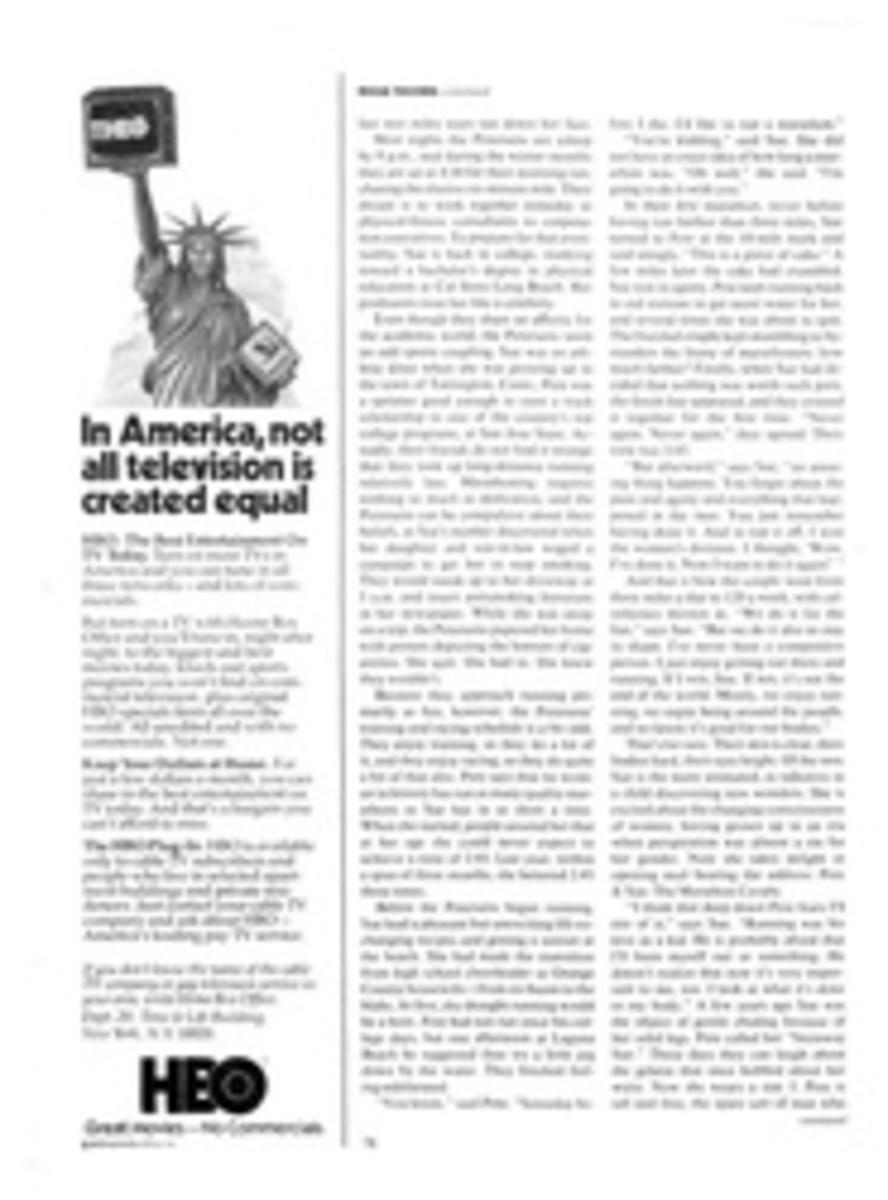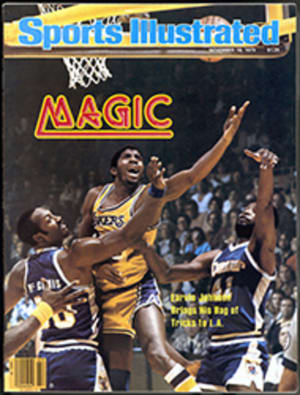
A LOCAL GAME FOR THE LOCALS ONLY
ABC brought one of the wagons of its weekly football television circus to Lebanon Valley College (student pop. 950) in Annville, Pa., 20 miles east of Harrisburg, last Saturday, and it was, said the Lebanon Valley football people, "the biggest thing that's ever happened here." Visions of the entire nation watching the traditional NCAA Division III clash between Lebanon Valley and 30-miles-down-the-Amish-country-road Franklin & Marshall faded when word seeped out that this was only one of 10 games being televised; that it would be broadcast only by Harrisburg's WTPA (Ch. 27).
Still, it was the big time, and a Lebanon Valley senior exulted, "What a way to close out a career." Some F&M students made plans for stay-at-home football TV parties, announcing, "We can always go to an away game, but you can't always see one of our games on TV."
ABC was in Lebanon Valley because, according to its contract with the NCAA, it must televise three Division III games during the regular season. But if ABC was obliged to televise the small fry, it could protect its ratings push by putting on such games in relatively small TV markets. Thus, the designation of the Harrisburg station, which rated 199th in viewing audience among ABC's 212 affiliates and reached 0.58% of the national TV audience. The major colleges split $533,000 for appearing in a nationally televised game and $401,000 for a regional game; Division II schools split $30,000 for an appearance, and Division III schools get $7,500 each.
But sometimes there are other rewards. When little Sewanee (Tennessee) had no structure that would accommodate ABC's cameras last year, unit manager Steve Israel built a press box that cost the school only $2,000. While the memory of that telecast recedes at Sewanee, the press box still stands. Once, planning to do a traditional Little Three game—Amherst at Williams—ABC ran into a turndown from Amherst. The Lordly Jeffs were uncomfortable about acquiescing to such ABC needs as changing the time of the game; they feared that ABC, so accustomed to big-time flamboyance, might not quite capture the leisurely spirit of a green and leafy New England fall football afternoon.
ABC came to Lebanon Valley's open Arnold Field, nestled in the rolling meadows of central Pennsylvania's rich farming country, with a two-camera set-up. A national telecast might require nine cameras, with a crew of 70, and cost $120,000 to produce. The two-camera set-up involves a foray by some 30 people, with production costs of about $30,000.
Two cameras impose limitations on the scope of a telecast, but not on the aims of young production people. "In my opinion this is the No. 1 game," said director Bob Lanning, 29, New York Tech '72, at the production meeting, voicing the philosophy of Ken Wolfe, 26, Harvard '74, who was on his first producing assignment. The play-by-play announcer was Don Tollefson, 27, a Stanford man and sportscaster on ABC's Philadelphia affiliate WTVI; it was his first play-by-play assignment. And the analyst was John Dockery, 35, Harvard '66, Jets Super Bowl '69. Dockery spent Thursday at F&M and Friday at Lebanon Valley, probing coaches and players to an extent that might have awed the national game analysts.
By air time Saturday, nine ABCers and the two cameras were pinched onto a 25-foot-long, plastic-enclosed platform that had been jerry-built atop the two-level wooden press box the day before. When they reached the rain-soaked game site, they had learned that their single slow-motion disc was busted and that they would have to use a tape machine that was not as effective.
Now, in the midst of the opening comments by Tollefson and Dockery, they noticed that their monitor was providing not their game, but the Minnesota at Michigan State telecast. The first filled-with-terror hope was that they were tuned to another ABC station in the vicinity, but then came a battery of irate phone calls to the ABC truck from irate viewers in the area. Some feverish calls finally located the problem, an errant telephone company switch somewhere along the Annville-Washington, D.C.-Harrisburg relay. By the time the proper switch had been made, 28 minutes of the telecast had been lost.
Once on line, the crew settled down to a smart professional effort. "Not as many replays as a big telecast," said Dave Binkley, F&M '65, "but it looked pretty good." Binkley, a Harrisburg regular at F&M games, had solved his problem of whether to go to the game or stay home and watch it on TV by taking a TV set to the game with him.
Tollefson and Dockery brought enthusiasm without condescension to the Division III action. "These players won't go on to make the pros," Tollefson said, "but some will go into high school coaching, and in that way affect hundreds of high school players." Dockery provided color sidelights and Xs and 0s with the best of them: "I asked the F&M coaches how they would defense themselves and they said they would let the quarterback [Rob Shepardson] run because he was not a good runner."
Though a 7-0 loser, Lebanon Valley seized the day forever by taping the telecast for the school archives—for recruiting purposes and alumni gatherings. The hosts declined the ABC offer of a copy of the control truck feed, preferring to have what was seen on the air itself. One of them said, "We want to have the image that comes from being seen along with the national commercials."
PHOTO
AFTER THE POWER FAILURE, WTPA IN HARRISBURG SHOWED ALL

